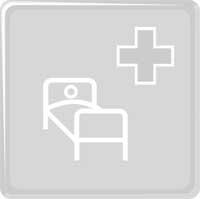Preventing and curing meningitis
1997/07/01 Agirre, Jabier - Medikua eta OEEko kidea Iturria: Elhuyar aldizkaria
What is meningitis?
As the word itself says, meningitis is an inflammation of the meninges, that is, of the membranes covering the brain and spinal cord (nerve substance inside the spine). This inflammation can be due to different causes: bacteria can be responsible for the infection (e.g. meningococcus, pneumococcus, Koch bacillus, etc. ). ), but also viruses and fungi, whose severity varies greatly depending on the creative germ. Meningococcal meningitis, for example, and this is the variety that Esames has made known in recent months, is an infection caused by meningococcus and considered one of the most burdensome.
The disease occurs mainly in children 6 months to 6 years, followed by adolescents and youth in military service. Among adults, the highest risk groups are the elderly, alcoholics and diabetics. Meningitis is transmitted by respiratory means, but bacteria are easily destroyed in the natural environment (that is, they are very resistant). On the other hand, the difficulty of diagnosing the disease is relatively simple and therefore, early care is another factor in favor of the patient, which is cured without problems and without sequelae.
How many types of meningitis are there?

Before we have seen that in the face of the creative germ you can distinguish meningitis produced by bacteria, viruses and fungi. And in bacteria, meningococcal meningitis has grown the most among us lately.
Until recently, the most frequent meningococcal meningitis was type B, but today the most visible is type C. And fortunately, unlike the previous ones, this type C meningitis has a simple way to prevent with the vaccine, as we will see later.
Vaccine: for whom?
Currently there is a protective vaccine against a type of meningitis, meningococcal meningitis type C, although its effectiveness in the best case is “only” 90% (90% in adults, lower incidence in children and does not affect children under two years). Note that the effectiveness of other vaccines such as hepatitis or polio is 100%.
The outbreak in the community of Madrid aroused a huge alarm and as a result, on 14 February began the massive vaccination of the population from 6 months to 19 years in the small town of Villareso de Salvenés, measures that have been repeated in other Autonomous Communities. In the Autonomous Community of the Basque Country, the Aiara-Galdakao Valley welcomed everyone between 2 and 20 years into the campaign launched in early March.
However, the health authorities (first those in Madrid, and also those of other autonomous communities followed, in our case Mr. Azkuna has been the only one who has tried to “reassure” the issue in the media one thing and another is whether it has achieved it, or if the message given has been correct, at the moment and in the content) they have clearly said that the situation is not high risk or worrying. However, the Epidemiological Observation Services, both at the state and regional level, have found that the trend has been strengthened in terms of the increase in the number of cases. This may suggest a way of thinking that we can be in a period of time between epidemics and that, as has happened in the 1970s and 1980s, we are about to enter an epidemic phase.

The risk has not reached high levels, from the general epidemiological point of view, although general vaccination has been recommended as a preventive measure in areas where this risk has increased. In the rest of the cases, in case of doubt, it is best to go to the family doctor or pediatrician and the specialist will assess each case taking into account the need for vaccination.
On the other hand, if there is a minimal symptom that makes us think that a child or adolescent can have infection, it is advisable to go to an emergency center where doctors will do all the necessary tests for both the child and the young, conferring or rejecting that fear. At this point, it is preferable to go to the doctor in case of minimal doubt than not and then complain and regret.
In short, and with the perspective of time I would say that the information provided by the health administration has been truthful, since the cases of recorded disease do not justify the alarm of the population and the “scandal” of the media, but the health authorities did not publish that information in time and in that initial official silence you can look for the source or origin of this alarm reaction.
Early detection, essential to cureThe most important measure for the cure of meningitis is the early detection of symptoms, which allows an adequate diagnosis and an appropriate antibiotic treatment after the patient. If the disease is diagnosed early, meningitis is cured without sequelae. Symptoms
Treatment Once the disease is diagnosed, the doctor will apply the appropriate antibiotic treatment. Family members of the patient with meningococcal meningitis and family members should also receive preventive treatment with antibiotics. |

Gai honi buruzko eduki gehiago
Elhuyarrek garatutako teknologia





